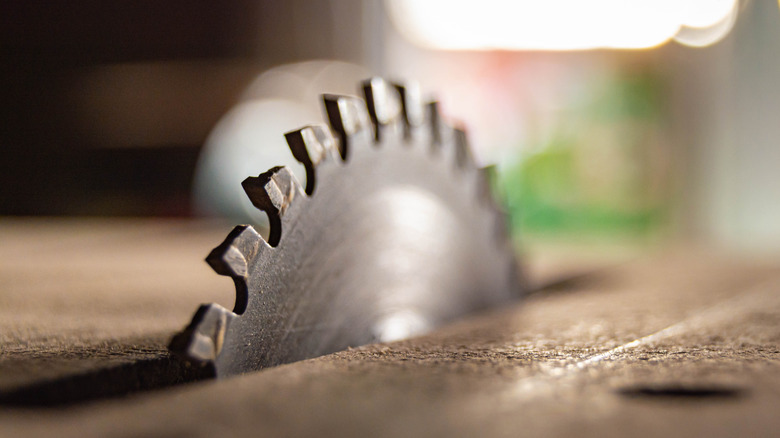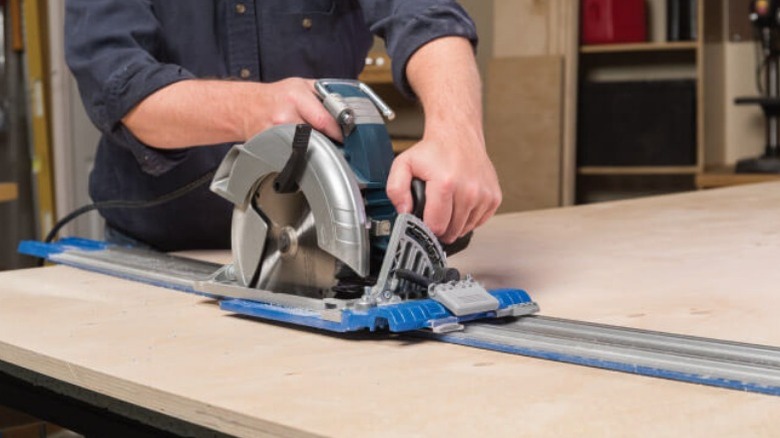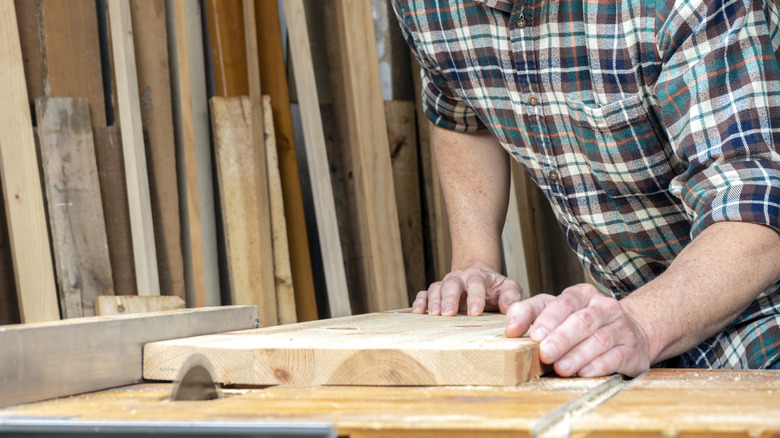Table Saw Vs. Track Saw: Which Is Better For Your Woodworking Project?
There are a lot of different kinds of power saws out there, and each of them has specific kinds of cutting tasks that they're best suited for. Miter saws are best for narrow cross-cuts across boards, while jig and scroll saws excel at detail work and curved cuts. Even the different types that are designed for making long, straight cuts have significant variance, and one of them may be more advantageous in certain circumstances than another. You might even be able to complete a lot of the same projects using any of these tools, but the differences in their designs make certain kinds of saws much more adept at completing specific cuts with a greater degree of ease and precision.
The table saw and the track saw are two of the most popular options for making longer rip and cross-cuts. There is a lot of overlap in the types of cuts that these two tools can make. Both of them cut in a straight line, both are able to make use of blades that can cut both with and across the wood's grain, and both offer adjustable blade mounts that can be used for angled, beveled, and compound cuts if the situation calls for it.
Those who are just getting into carpentry and are looking to pick up a saw to help them complete a few beginner-friendly woodworking projects might be curious which of these two tools is better suited to their needs. I've been working with wood for the better part of a decade, and while the track saw is certainly useful, I can say from experience that the table saw will be the better option for most craftspeople.
Track saws are better for breaking down large sheet goods
Track saws (also called plunge-cut saws), are essentially a form of circular saw that is designed to work in tandem with a metal guide rail called a track. The track keeps the tool perfectly even, so you can get precision cuts on nearly any surface. Many of them also have a spring-loaded plunge mechanism that allows the blade to drop into the board so that a cut doesn't necessarily need to begin at an edge.
Track saws are best known for their ability to break down sheet goods. Large, 4'x8' sheets of plywood, particleboard, and MDF are difficult to balance on a table saw. Attempting to do so is both unsafe and likely to result in mistakes in the cut. Track saws have precision that is similar to a table saw, while also having the mobility of a circular saw. This makes them a great option for building cabinets, bookshelves, and furniture made of these kinds of sheet goods, as well as for use on job sites where a large and ungainly table saw might not be practical. I've used mine for everything from bookshelves to cutting wall panels, underfloor, and roof sheathing. The ability to plunge-cut is also useful for cut-outs that a table saw would not be able to perform, such as cutting a square out of a roof for a skylight.
Helpful as the track is, however, it can be difficult to perfectly line up each cut. Doing so requires a lot more meticulous measurement and checking with a square to make sure that it's completely straight. Depending on the tool, this can be frustrating and time-consuming. They also won't be able to cut small or narrow pieces without some sort of jig holding the wood in place.
Table saws are better for everything else
It's true that table saws are less portable and aren't ideal for plunge cuts or breaking down sheet goods than track saws, but they are better suited to just about every other cutting task you might attempt. There is a reason that this tool is the centerpiece in most wood shops. Table saws can make cross, rip, and mitered cuts. This means that they can cut wood in virtually every direction. You can use a rip fence for perfectly straight cuts that go along the grain of a board, and a miter gauge or a sled for cuts that are made at an angle or across the grain. You can also add various jigs that allow for more complicated cuts.
The best argument I can make is that my track saw spends most of its time sitting on the shelf, but it's rare for me to get through a project without using my table saw. I can't even list the number of projects this tool has seen me through, from my first cutting board to complex pieces of furniture. Nothing beats it when it comes to rip-cutting boards or precision joinery techniques such as dados, rabbets, or grooves. On top of that, it is much better at cutting small or narrow pieces of wood that would be difficult to cut using a track saw.
For all of these reasons, I would suggest investing in a good table saw before getting a track saw for most people. The only exception would be if the primary focus of your woodworking revolves heavily around breaking down sheet goods for tasks such as cabinetry.


